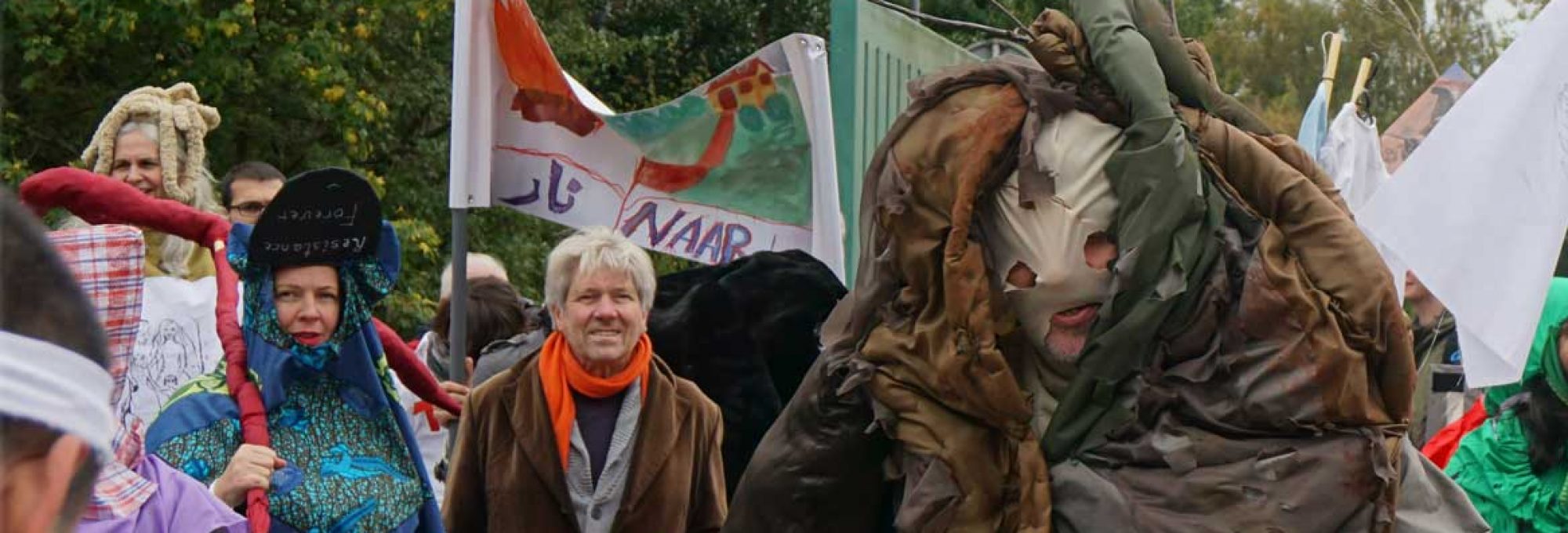HD – 16×9 – Full colour – with sound Stereo 37’38 length
Red Yurt
In 2020, I was invited to participate in the research laboratory Space 1520, organised by Garage Museum of Contemporary Art, Moscow, which focused on Soviet and post-Soviet colonialism. I was at this point already concerned with the issue of exploitation of women working in textile and fashion industries. During my research with Space 1520, I discovered Kyrgyzstan as a country with one of the largest textile industries, sewing the garments for export mainly to Russia. So, I travelled there and finally saw the conditions of seamstresses with my own eyes. This profoundly changed my view of reality.
The title of the exhibition at Framer Framed To those who have no time to play came from my visit to the house of the seamstress Rahat, where I was shocked by her living conditions and realised that all the words and questions that might fall from my mouth will be futile in this context. I had a myriad of reactions: feelings of confusion and guilt, combined with the urge to try and do something. I made an effort and asked her: What were you playing in your childhood? Rahat answered that she played with stones.
The protective distance for human beings from becoming robots comes through play and humour. But it turns out that the game itself is a luxury that cannot be afforded by people who are overworked and cannot take time to reflect or even read a bedtime book to their children. The neoliberal structure of the market places the responsibility of the working day on the individual, there is no control to limit the working hours as it was during the Soviet era, where seamstresses were coming in at 8 am and leaving at 5 pm. Seamstresses become like machines, filled with concern for producing as much as possible, since it is the amount of production that determines the amount of money they will be paid. They are regularly tortured by overworking, often through the night, until their bodies become full of pain. Let me share a fragment of an interview with seamstress Dinara:
Hard to recall good days. Every day is in a bad mood. You take a lot of work and work 18-20 hours at times to have it finished. Often, I work up until two or three in the morning. It is beneficial to the owner, inasmuch as his profits grow the more we work. Taxi expenses are taken from my pocket. And so, on almost every day. No time for recess. There’s a family to feed. It should be eight hours of work as a norm, but I have not ever even tried to. At a minimum it is 10 hours a day, but mostly 15-16 hours. It even happens to work 24 hours without sufficient sleep. After work I rush to lay down and sleep. On my day off I strive to replenish my energy sleeping.
The title of this space Red Yurt references not only the controversial Soviet Likbez (“liquidation of illiteracy”) campaign among women in Central Asia, but also the sacrifice of the women oppressed by the new wave of patriarchal orthodoxy, which came along with the freedom of Kyrgyzstan from Soviet power.1 One example of this is in the tradition of bride-kidnapping, or Ala kachuu (meaning “to take a young woman and run away”). While the tradition was suppressed during Soviet rule, it has re-appeared in Kyrgyzstan’s search for a new/old identity after the collapse of the USSR.
A reflection and artistic digestion on this phenomenon of becoming the nation unfolds inside the Red Yurt in a video installation showing the performance of actress Gulmira Tursunbaeva, who plays the role of a TV host telling feminist fairy tales as the video cuts to scenes of dance and street performance. The stories in this film are based on my interviews with the Bishkek seamstresses, material from the human rights organisation Open Line and materials from the Moscow archive of female workers in the USSR. The dark clothes and puppets together with the curtain inside the structure reference the terrifying symbol of bride-kidnapping: koshogo, a sheet used as a screen behind which rape takes place, leading to forced marriages. Outside, the yurt is decorated by the outcome of my workshops with Felt Art Studio, Issyk Kul, which I have visited during my research in Kyrgyzstan in 2021. The felt paintings displayed at Framer Framed have been produced in collaboration with the studio, based on my sketches and through their felt production method.
To speak of activism sounds confusing in this context of misery and despair, but I have approached my collaboration with the seamstresses in Kyrgyzstan as a way of processing the huge gap between us, and an attempt at building forms of support and sharing that might exist between myself and these women.
1 Szálkai, Kinga. “The Soviet Union as a ‘Feminist Colonialist?’ The Women’s Question in Early Soviet Central Asia.” Corvinus Journal of International Affairs, Vol. 4, No. 1 (2019): pp. 4-14.
